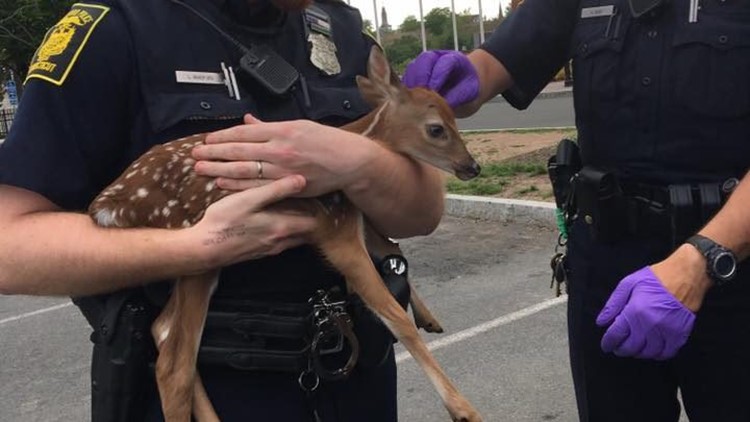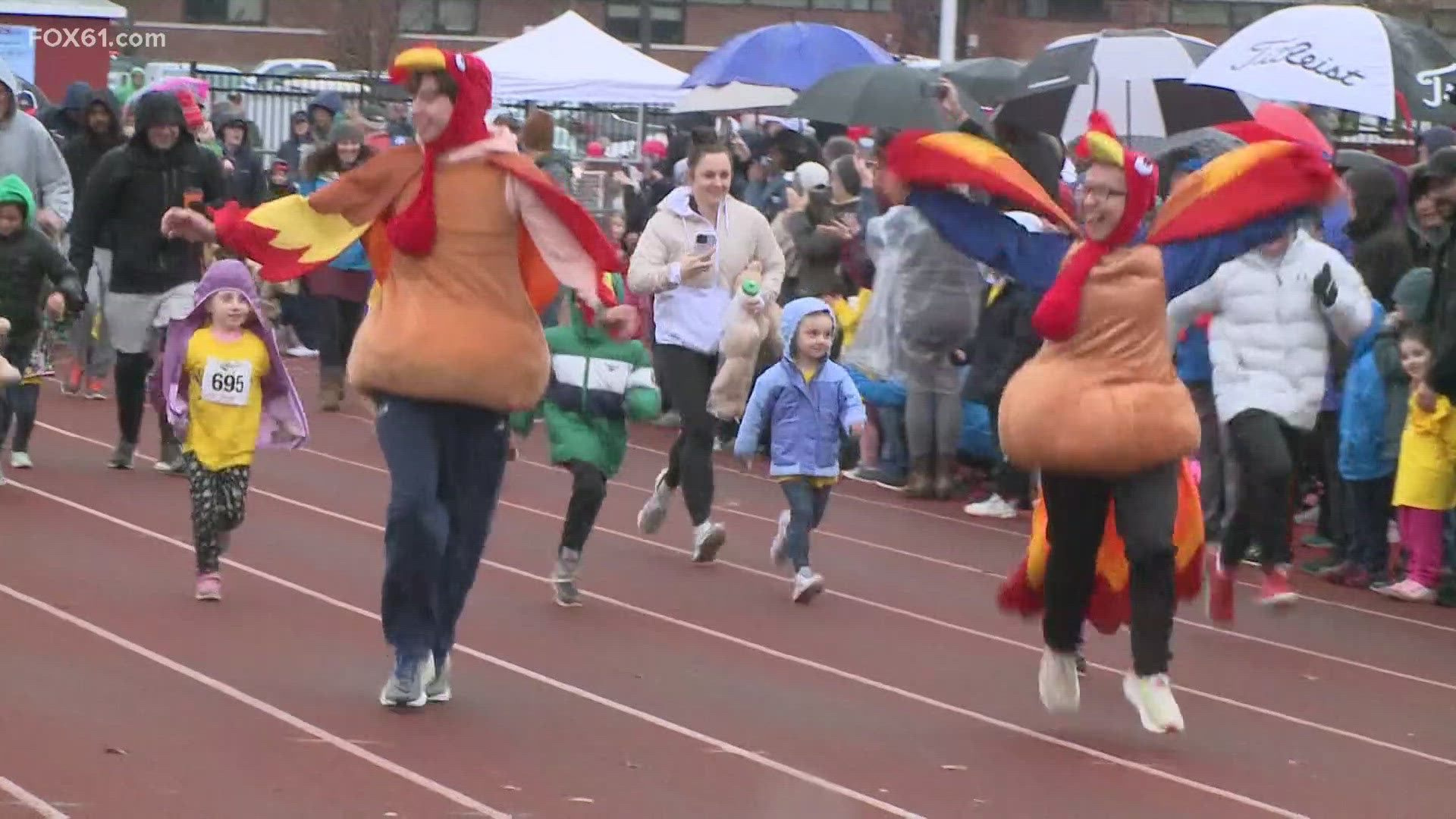HARTFORD -- In the past week we've seen three fawns helped by police officers in towns across the state. What should you do if you come across a wild animal you think is abandoned of in need of help?
Laurie Fortin, Wildlife Biologist with the Connecticut Department of Energy and Environmental Protection, joined FOX 61 Good Day Connecticut with tips from DEEP:
Someone may come across a young bird or mammal that may appear to be orphaned or injured. It is normal for many animals to leave their young alone for long periods of time, so your help may not be needed. In all likelihood, the adult is nearby watching and waiting to return.
White-tailed Deer: The only time a female (doe) will be found with a fawn is during feeding times. Fawns are fed three to four times a day, each feeding lasting about 15 minutes. During the long periods left alone, newborn fawns instinctively freeze and will lay motionless when approached.
“If you come across a fawn, it is best to leave it alone for at least 48 hours to determine whether the adult is returning for feedings,” said Rick Jacobson, Director of the Department of Energy and Environmental Protection (DEEP) Wildlife Division. “While waiting for the doe to return, it is important that both people and dogs stay away from the fawn. A truly orphaned fawn may show signs of distress by walking around aimlessly and calling out for several hours.”
Rabbits: Baby rabbits are one of the wild animals rescued most often, but usually do not need human help. Mother rabbits are only at the nest to feed their young twice a day for about five minutes – at dawn and dusk. Often times, rabbits nest in the middle of a backyard so they can see any predators that may be approaching while they are nursing their young. Baby rabbits are only in the nest for two to three weeks before becoming independent. Leave the nest alone or return the young to the nest unless they are found cold or obviously injured.
Birds: Many people find young birds hopping around the yard in June and July. Most of these birds are old enough to leave the nest, but are still not efficient fliers. If you find a fully feathered, young bird that is unable to fly, it is best to leave it where it was found. The adults are probably still caring for the young bird, which should be capable of flying within a few days. Remember to keep pets away from the bird and watch it closely for at least an hour to see if the adults are returning to feed it.
Red Fox: These red fox pups may look cute, but they are still wild animals and should not be handled. Young foxes are cared for by both adults. Therefore, the death of one adult does not necessarily mean that the young foxes are orphaned and need assistance.
If you find a young bird on the ground that appears to not have feathers, look for a nest. If a nest is in a nearby tree or shrub and the bird feels warm to the touch, try to place the nestling back into the nest. If the nest has fallen on the ground, make a new nest with a wicker basket and some dry grasses and hang the basket with the nestling in it in a nearby tree or shrub. Most birds have a poorly developed sense of smell and will not be scared away if you touched the young bird. Be sure to watch the nest carefully for at least an hour to see if the adults return to find and feed their nestling.
Injured Animals: If you find an animal that is definitely injured or orphaned, remember to:
- Avoid direct contact;
- Keep pets and children away;
- Use heavy gloves to transfer the animal to a cardboard box or escape-proof container;
- Keep the animal in a warm, quiet place;
- Contact an authorized wildlife rehabilitator.
“Connecticut’s authorized wildlife rehabilitators care for more than 11,000 animals each year,” said DEEP Wildlife Division biologist Laurie Fortin. “Most of these are young wild animals that were brought in by well-intentioned individuals. However, many did not need to be rescued.”
Wild Animals as Pets: Keeping wild animals as pets is discouraged, may be illegal, and when legal is subject to state and federal regulations. Raising wild birds and mammals for successful return to the wild requires considerable knowledge of feeding formulas, countless hours of care, and appropriate outdoor caging. Improper care results in underweight and undernourished animals or animals that are not releasable because they have become too accustomed to being around people.
“Although it may be natural to want to assist young animals, caring for them may actually do more harm than good,” added Fortin. “It may be dangerous too, as direct contact may result in exposure to rabies or other diseases carried by wildlife. Be aware that even young mammals can carry and transfer the rabies virus in saliva. Handling a potential rabies carrier, such as a baby raccoon, without proper precautions may require that the animal be euthanized for rabies testing.”
In Connecticut, there are approximately 250 authorized volunteer wildlife rehabilitators with the skills and training to care for sick, injured, and orphaned wildlife.



